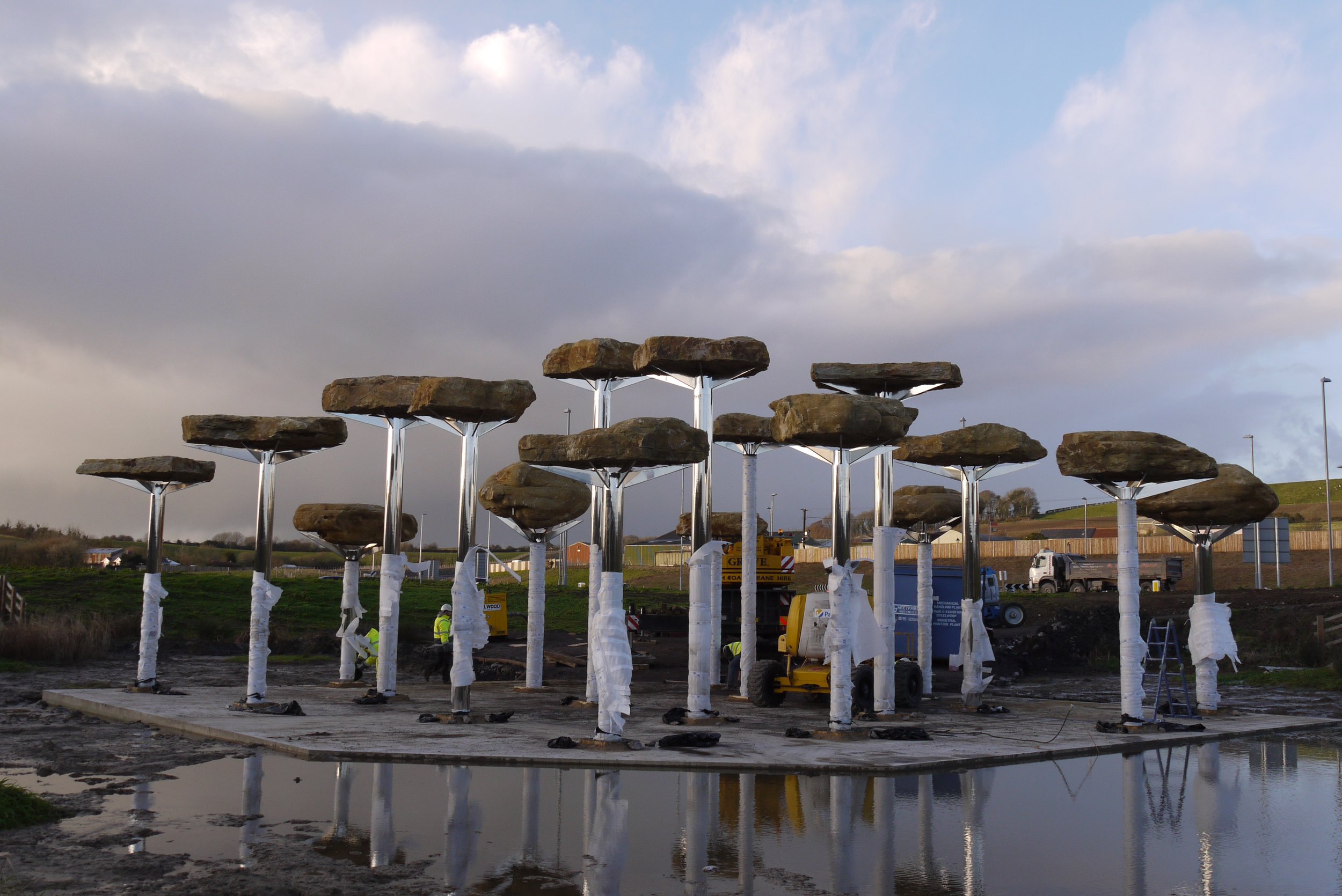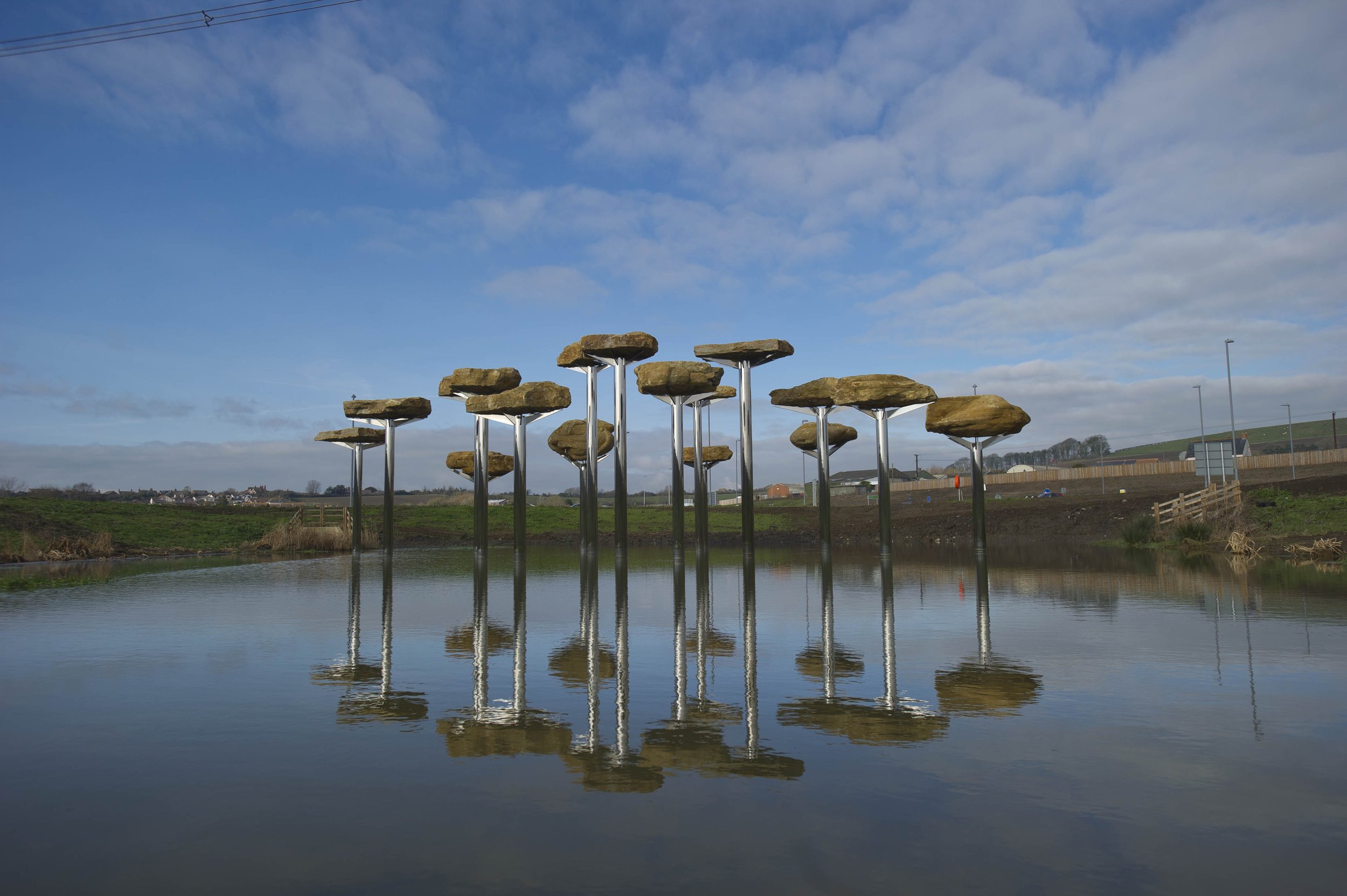Jurassic Stones
Weymouth
I was inspired to work with the large Bencliff Grit stones when they were revealed by the road excavations on Southdown Ridge – to preserve them and to give them a new life after millions of years under ground.
The stones ‘float’ delicately above the water with a quiet energy – defying their weight and our sense of stone.
I hope the sculpture will encourage people to think about the geology of the Jurassic coast and the importance of the stones as indicators of the earth’s history.
Richard Harris




Geology
The Dorset and East Devon Coast was given World Heritage status in 2001 because the rocks in the cliffs are a unique record 185 million years of Earth’s history from the beginning of the Triassic Period 250 million years ago to the end of the Cretaceous period 65 million years ago. Every layer of rock is another page in a story of changing environments and evolving life forms. The coast is the best place to see this record as erosion has sliced through the rock layers making them easy to study. Inland it is harder to investigate the rock layers but it is very easy to appreciate their impact on the landscape. The Weymouth Relief Road cuts through rocks that formed between 160 and 65 million years ago, all of which can be seen along the coast. The hard limestones form the hills and ridges and the soft clays form the vales. The Southdown Ridge is formed by a sequence of hard limestone bands with softer rocks between them known as the Corallian. The Corallian formed during a time of fluctuating sea levels when the climate here would have been similar to that found in the Bahamas. The stones that Richard Harris has chosen to use for his sculpture come from near the middle of this sequence.
These odd shaped boulders are examples of what geologists call 'concretions'. They come from a layer of sandstone known as the Bencliff Grit that formed about 155 million years ago during the Jurassic period. Very soon after the layers of sand were layed down minerals started to concentrate around fragments of plant or shell within the sediment. Slowly these minerals started to fill up the spaces between the grains of sand around these fragments forming very hard 'lumps' within sandstone. When we look at the Bencliff Grit today we find it is mostly a very soft sandstone that easily crumbles apart in your hands but contained within the layers of soft sandstone are these very hard concretions of various shapes and sizes.






